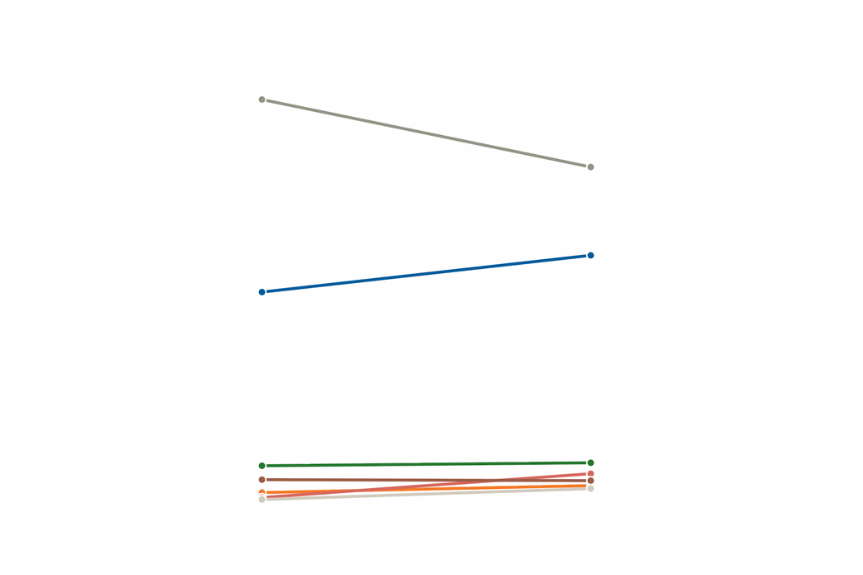In Tight Race, Humala Wins Peruvian Runoff Vote
In Tight Race, Humala Wins Peruvian Runoff Vote
After narrowly edging out Keiko Fujimori to win the Peruvian runoff, President-elect Ollanta Humala faces the challenge of uniting a country divided by the race.
After a neck-and-neck race, Ollanta Humala edged out Keiko Fujimori to win the June 5 runoff vote for Peru’s presidency. With over 88 percent of votes tallied on the morning of June 6, Humala had won 51.27 percent of the vote against Fujimori’s 48. 5 percent. Though Fujimori carried Lima, Humala won in a majority of Peru’s regions. A retired military officer, he spent much of his candidacy trying to shake off comparisons with Venezuelan President Hugo Chávez and replace them with the more centrist model of ex-President of Brazil Inácio Lula da Silva. But his opponent had ghosts of her own; Keiko Fujimori, an ex-legislator, is the daughter of former President Alberto Fujimori—now serving time for corruption and human rights abuses carried out under his watch. To some degree, both candidates can thank the centrist candidates in April’s first-round election for dividing the centrist-voter block, thereby letting the left-leaning Humala and the conservative Fujimori advance (Humala won the first round with 31.7 percent against Fujimori’s 23.6 percent). When he takes office next month, Humala faces the challenge of reuniting a country split by a divisive presidential race.
The Nationalist Party’s Humala has spent much of his campaign distancing himself from the label “leftist.” An El País article makes the case that his political shift dates further back. When he lost a 2006 runoff against current president Alan García, reports the article, Humala realized that his biggest misstep involved linking his political platform to chavismo. Observers still have their doubts, evidenced in comments from Peruvian congressman and Humala-campaign spokesman Daniel Abugattas, who contended that property will not be nationalized under the new president. “There isn’t going to be a tax on your chickens,” he told a Lima-based TV station. “Nobody’s going to take away your house or your garage. Nothing that’s being posted on Facebook or Twitter is going to happen.” In a country that has seen rapid economic growth, Humala has not won over the business community but found support among poor voters who feel left out of the boom.
Humala succeeded in changing some minds, however. Shortly after he and Fujimori won the first round, Nobel Prize-winning author and prominent Peruvian intellectual Mario Vargas Llosa famously compared the race to “choosing between AIDS and terminal cancer.” Although a conservative, Vargas Llosa—who lost the presidency to Alberto Fujimori in the 1990 election—eventually decided to back Humala. He also pulled his column from Peruvian daily El Comercio, calling the paper a propaganda machine for Keiko Fujimori. Former President Alejandro Toledo, knocked out in the first round, also came around to support Humala after previously calling support for him a “jump into the abyss.”
Still, some Peruvian rights activists backed Humala less because of their support for him and more out of concerns over memories of the Fujimori presidency, in which Keiko served as first lady at the age of 19 after her father divorced her mother. Most voters accepted that Keiko is not Alberto, as Lima-based Reuters correspondent Caroline Stauffer writes for Americas Quarterly, but “they question why the young Fujimori has included many of her father’s advisors in his campaign, and why she has said he was the best president ever.” Though the Fuerza 2011 candidate said two years ago that she would pardon her father if she became president, she later reversed course and pledged not to. And, while Humala may have had his converts, Fujimori did, too. She won the endorsements of centrists such as economist Pedro Pablo Kuczynski (who finished third in first round), former Lima mayor Luis Castañeda, and ex-Finance Minister Mercedes Aráoz.
Each candidate ran a race marked by an about-face, but Humala may find himself forced to stick with his new centrist path. Peru’s Congress remains fractured among various parties and, while Humala’s can count 47 our of 130 seats, the figure falls well below a majority and underscores the need to build alliances.
Learn more:
- Website of Peru’s electoral agency.
- La Republica’s election page.
- El Comercio’s election page.
- Access an AS/COA Online guide to the election.








